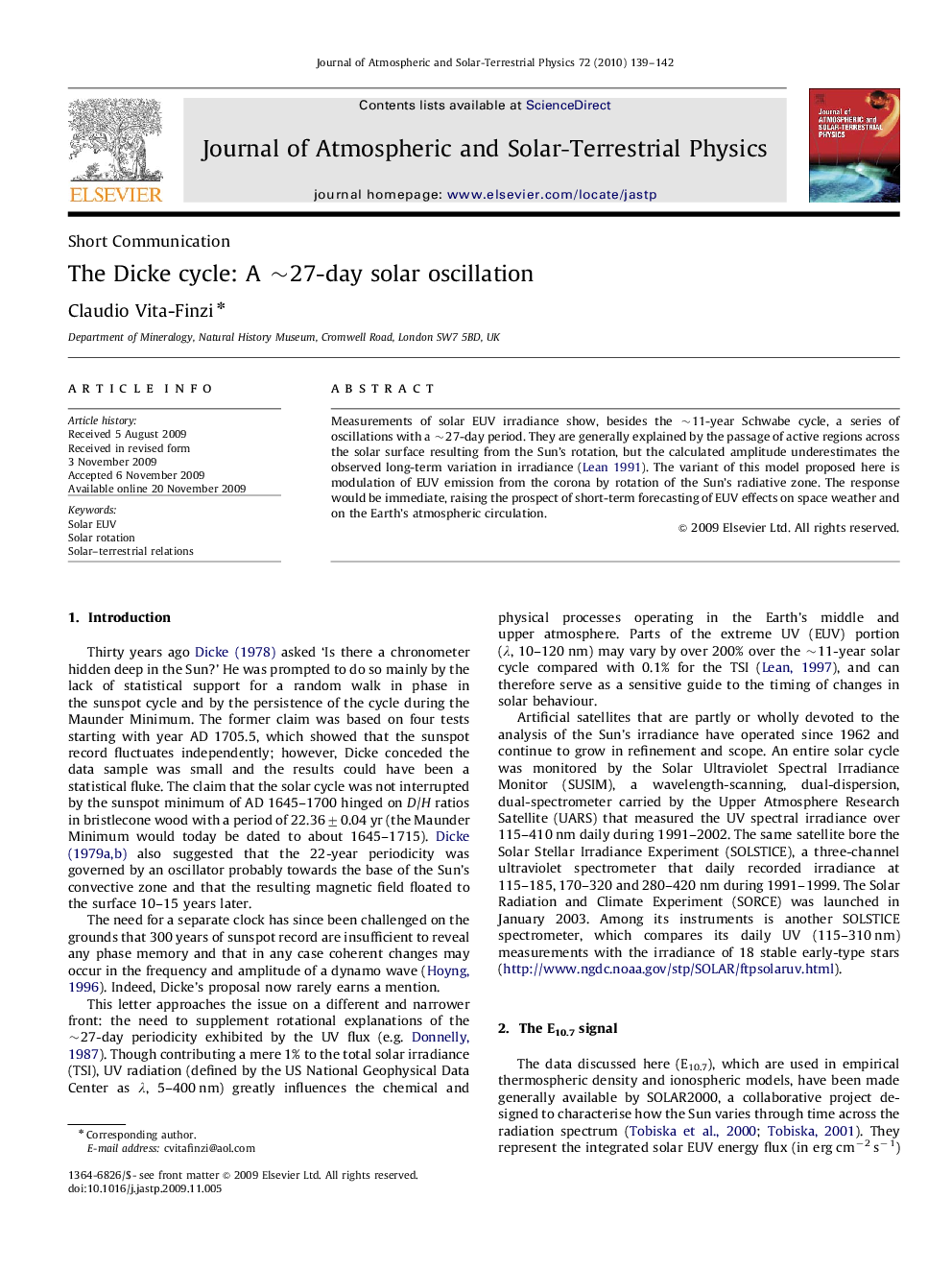| Article ID | Journal | Published Year | Pages | File Type |
|---|---|---|---|---|
| 1777413 | Journal of Atmospheric and Solar-Terrestrial Physics | 2010 | 4 Pages |
Abstract
Measurements of solar EUV irradiance show, besides the ∼11-year Schwabe cycle, a series of oscillations with a ∼27-day period. They are generally explained by the passage of active regions across the solar surface resulting from the Sun's rotation, but the calculated amplitude underestimates the observed long-term variation in irradiance (Lean 1991). The variant of this model proposed here is modulation of EUV emission from the corona by rotation of the Sun's radiative zone. The response would be immediate, raising the prospect of short-term forecasting of EUV effects on space weather and on the Earth's atmospheric circulation.
Keywords
Related Topics
Physical Sciences and Engineering
Earth and Planetary Sciences
Geophysics
Authors
Claudio Vita-Finzi,
